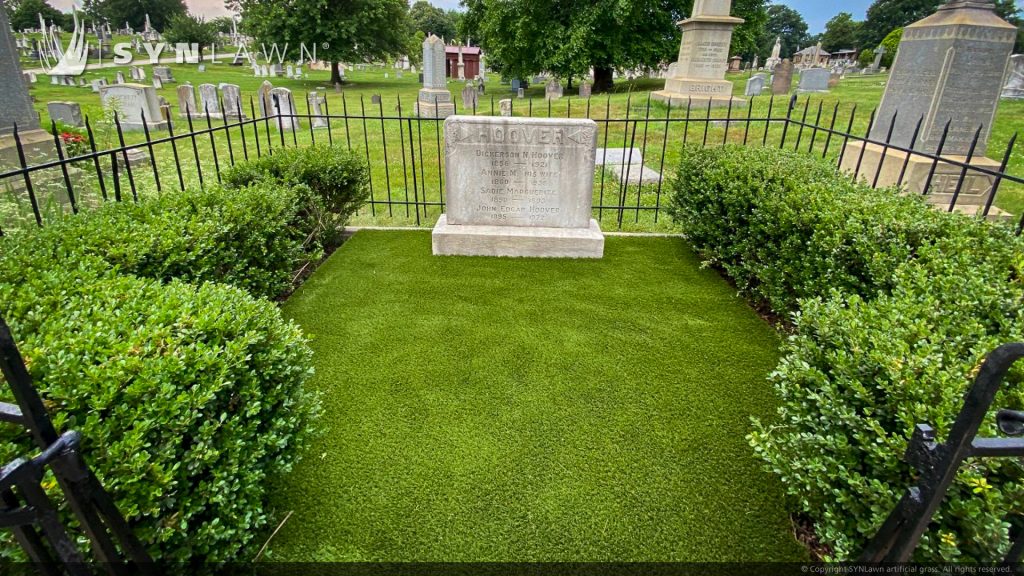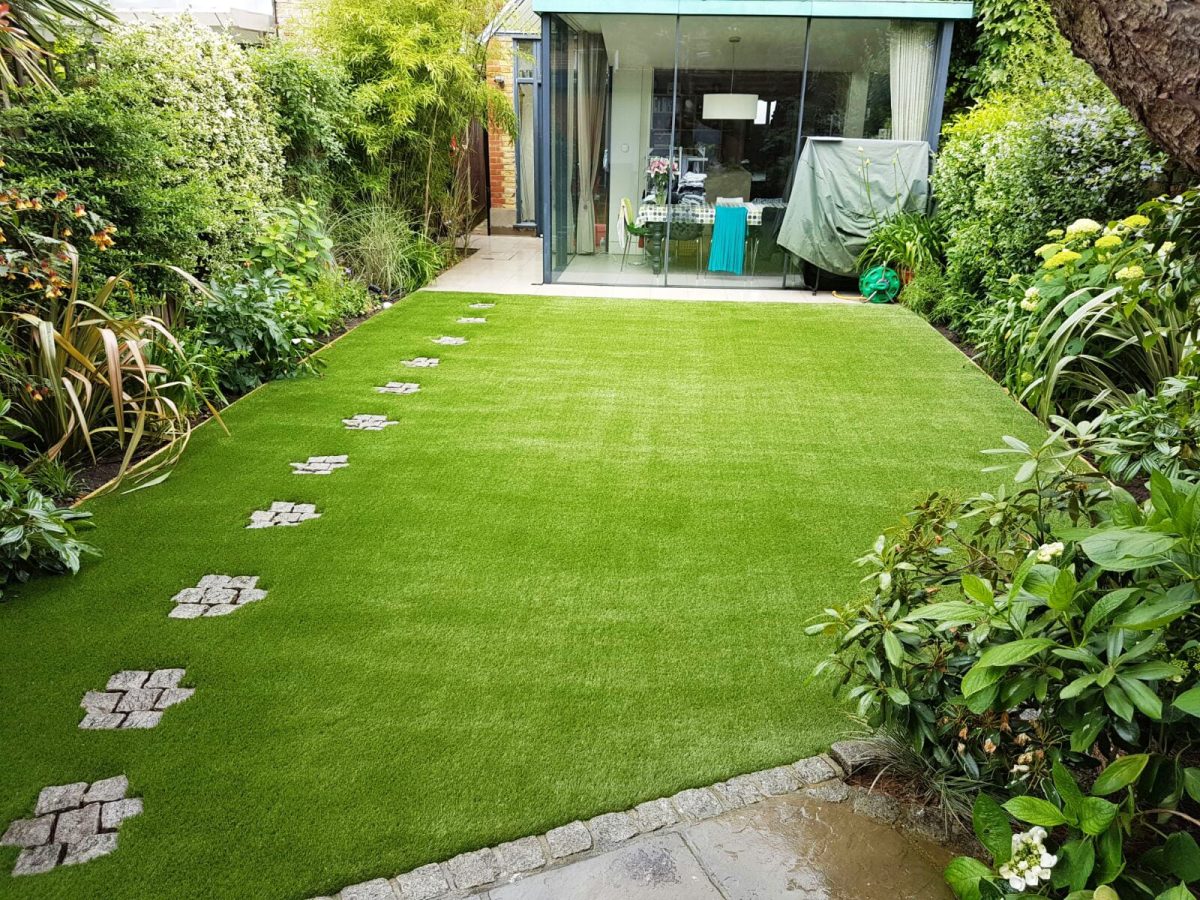Understanding Exactly How Fabricated Lawn Functions for Your Home and Garden
Man-made lawn has become a useful remedy for property owners seeking to enhance their outdoor areas without the burdens of conventional grass upkeep. Understanding its structure, installment process, and the various kinds offered can reveal substantial benefits for both visual appeals and performance. The implications of choosing artificial turf extend beyond simple look; they touch upon environmental considerations and lasting sustainability. As we discover these elements, one must consider how this ingenious technique can basically modify the landscape of home horticulture. What variables should you weigh before making the transition?
Benefits of Synthetic Grass
Acknowledging the growing popularity of fabricated grass, it is essential to discover its numerous advantages. Unlike all-natural turf, artificial turf does not require fertilization, watering, or mowing, which converts to time and cost financial savings for homeowners.
In addition, artificial grass gives a regularly environment-friendly and lush look throughout the year, no matter of weather. This aesthetic appeal boosts the aesthetic high quality of any landscape, making it an eye-catching selection for houses. Additionally, synthetic grass is sturdy and developed to hold up against hefty foot traffic, making it a suitable remedy for family members with family pets and kids.
Safety and security is an additional vital consideration; modern synthetic grass is frequently made from non-toxic materials and incorporates shock-absorbing technologies, lowering the threat of injuries throughout play. Man-made grass is resistant to weeds and parasites, removing the requirement for chemical treatments, therefore advertising a healthier outside setting. Generally, the advantages of synthetic grass make it a compelling option for enhancing home and yard areas.
Setup Refine Summary
When thinking about the installation of artificial turf, a methodical strategy is necessary to guarantee optimal outcomes. The installation procedure commonly begins with comprehensive site preparation, which includes clearing the location of any existing yard, particles, and rocks. This action is vital for developing a steady and degree structure.
Next, it is very important to evaluate the water drainage capabilities of the location. Correct drain is essential to avoid water merging on the surface, which might lead to early wear or issues with mold. This may require excavation and the setup of a drain system if needed.
Once the site is prepared, a base layer is set up, generally containing crushed rock or decayed granite, compressed to develop a solid surface. After accomplishing a smooth base, a geotextile textile is set to inhibit weed growth.
The final phase includes laying the synthetic grass itself. The lawn rolls are placed, cut to fit, and protected at the joints using specific or sticky grass tape. Infill materials may be applied to improve stability and enhance the general appearance. Appropriately following these steps will result in a long lasting and visually pleasing man-made turf setup.
Types of Synthetic Grass

One of the key classifications is residential lawn, which is commonly used in yards, yards, and play locations. Industrial turf, on the various other hand, is engineered for high-traffic areas, such as sporting activities areas and local parks.
Another category includes landscape lawn, which imitates all-natural lawn closely to boost the aesthetic allure of gardens and exterior spaces. In addition, putting eco-friendly turf is particularly designed for golf enthusiasts, including a shorter stack height and a smooth surface for an optimum putting experience.
Last but not least, pet-friendly turf incorporates durable materials and antimicrobial homes to make certain a risk-free and hygienic atmosphere for pets. Choosing the appropriate sort of man-made lawn is important for attaining the intended look and performance in your house and yard.
Maintenance Demands
Appropriate upkeep is essential for extending the life expectancy and look of synthetic grass. Routine maintenance not just boosts aesthetic charm yet also guarantees ideal efficiency. The main maintenance jobs consist of cleaning, rinsing, and examining the turf.

Rinsing the grass with water assists get rid of dirt, debris, and family pet waste. Using a pipe with a spray nozzle makes this job efficient and effective. In areas prone to heavy rainfall, make sure correct water drainage to stop merging.
In addition, regular inspections for damages, such as rips or loose seams, are vital. Prompt repair work can prevent a lot more substantial concerns link and maintain the integrity of the turf. By adhering to these maintenance demands, house owners can appreciate the elegance and functionality of their artificial turf for years to find, making sure a lively and welcoming outside area.
Ecological Factors To Consider
Synthetic grass offers a complex selection of ecological considerations that warrant careful assessment. Turf companies mesa az. While it decreases the requirement for water, fertilizers, and chemicals, which are commonly associated with natural lawn upkeep, there are substantial worries concerning its production, disposal, and use
The production of artificial lawn includes petroleum-based products, questioning about nonrenewable fuel source usage and greenhouse gas exhausts. In addition, the setup process often calls for a layer of infill, frequently made up of products like crumb rubber, which can release damaging chemicals into wikipedia reference the setting.

Disposal of synthetic grass presents another obstacle, as it is not eco-friendly and can add to garbage dump waste. Some recycling alternatives exist, however they are not widely readily available or easily accessible.
Final Thought
In summary, synthetic grass provides various advantages for household and garden applications, including visual charm, low upkeep, and security for children and pet dogs. The installment procedure requires mindful consideration of drainage, base products, and lawn placement to make certain longevity and efficiency. Various types of synthetic turf deal with various requirements and preferences, while environmental considerations highlight its prospective sustainability benefits. On the whole, synthetic grass works as a attractive and functional choice to all-natural grass in outside areas.
Overall, the benefits of man-made lawn make it a compelling option for improving home and yard rooms.
When considering the setup of man-made lawn, a systematic technique is crucial to ensure ideal results. The lawn rolls are positioned, reduced to fit, and safeguarded at the joints making use of adhesive or specialized grass tape. Appropriately adhering to these actions will certainly result in a durable and aesthetically pleasing synthetic turf installment.
In recap, fabricated turf presents many advantages for property and garden applications, consisting of aesthetic appeal, reduced upkeep, and safety and security for youngsters and animals.